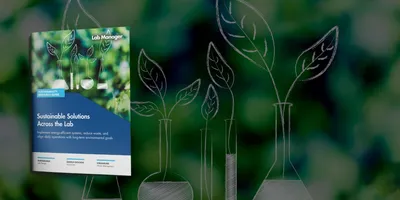The desire to decrease energy consumption and reduce an organization’s environmental impact are becoming top priorities across many industries, and laboratories are no exception. In addition to the environmental benefits, efforts to reduce laboratory energy consumption can also yield significant cost savings. With this in mind, the ultra-low temperature (ULT) freezer is an excellent place to start. Conventional ULT freezers can use as much energy as a typical single-family home— and require hydrofluorocarbon gases with high global warming potential. Switching to a more energy-efficient ULT significantly reduces energy consumption, carbon dioxide impact, and can save the laboratory thousands in electricity and HVAC (heating, ventilation, and air conditioning) costs. However, ULT freezers contain valuable samples and assets, and sacrificing reliability and temperature stability for cost-savings can have devastating consequences. Thermo Scientific™ TSX Ultra-Low Temperature Freezers deliver significant energy savings and reliable temperature control to protect the laboratory’s valuable samples. Featuring innovative V-drive compressor technology and green hydrocarbon refrigerants, the TSX Series protects samples and the environment.
Innovative technology adapts to changing conditions
Most traditional ULT freezers have single-speed compressors, that continuously cycle on and off. While effective, this design is not very efficient. Alternatively, V-drive variable speed compressor technology is capable of adjusting cooling performance based on conditions inside and outside the freezer. Under stable conditions, the compressor runs at a low speed to maintain temperature with a lower energy demand. The drive speed increases to maintain temperature upon detection of changes within the freezer or surrounding environment, for example, with frequent door openings. Improved compressor design also translates to much quieter operation, between 45.5 and 47.5 dB— similar to a home refrigerator. This makes it possible to keep one or more ULTs within the lab for more convenient access.
Designed with the future in mind
New and emerging policies, including the US Environmental Protection Agency’s Significant New Alternative Policy (SNAP) program, developed under the Clean Air Act, and the EU Fluorinated Greenhouse Gas (F-Gas) regulations are aimed at reducing emissions from ozone-depleting substances including hydrofluorocarbons. While the SNAP program is not yet federally mandated, TSX Series ULT freezers were proactively designed in compliance with SNAP. The new series relies on green hydrocarbon refrigerants (R290 and R170), which have very low global warming potential, and zero ozone depletion potential. They are safe, environmentally friendly alternatives to hydrofluorocarbons, and reduce the overall strain on the system. The design also includes water-blown foam insulation to eliminate the refrigerant out-gassing common in other foam products.
Safety is top priority in any laboratory, and is an important consideration for manufacturers switching to green hydrocarbon refrigerants. Thermo Scientific TSX Ultra-Low Freezers were designed and engineered for the safe use of hydrocarbon refrigerants and were tested and approved by Underwriter Laboratories in accordance with US and Canadian safety standards.
Reducing the total cost of ownership
.jpg)
In addition to the cost of energy required to operate a ULT, other factors contribute to the total cost of ownership. Freezers work by transferring heat from the cabinet into the room, which is then accounted for by the facility’s HVAC system. As such, HVAC costs should be factored into the total cost of ULT ownership. More efficient ULTs have a much lower heat rejection factor that reduces the burden on the HVAC system, resulting in lower total operating costs. TSX ULT freezers emit up to 70% less heat than older conventional freezers.
Raising the freezer’s setpoint from -80°C to -70°C can also reduce energy requirements and operating costs, without risking sample integrity. This simple change can reduce energy demand by 10-18%, and many sample types, including nucleic acids, bacteria, viruses, purified proteins, and enzymes can safely be stored at -70°C. Rapid door recovery (as fast as 14 minutes for a one minute opening) maintains the setpoint to ensure samples are protected.
Advanced Lab Management Certificate
The Advanced Lab Management certificate is more than training—it’s a professional advantage.
Gain critical skills and IACET-approved CEUs that make a measurable difference.
A commitment to sustainability
In 2016, the EPA began accepting submissions for ENERGY STAR® certification of laboratory-grade ULT freezers. The rigorous test method includes standardized procedures, a specific list of attributes and data that must be reported in whole, and a specific list of requirements that must be met to achieve certification. Thermo Fisher Scientific cold storage products represent a large portion of ENERGY STAR® qualified products, including the entire TSX Series.
The Thermo Fisher Scientific commitment to sustainability is a continuous pursuit that extends beyond specific products, encompassing sourcing, manufacturing, packing and shipping. 13 manufacturing sites around the globe are certified zero waste, diverting at least 90% of their waste from landfills into recycling or reprocessing streams. Thermo Fisher Scientific Ultra-Low Temperature freezers combine innovative V-drive compressor technology and green hydrocarbon refrigerant gasses to reduce energy costs and environmental impact, all without sacrificing your top priority— keeping valuable samples safe.












